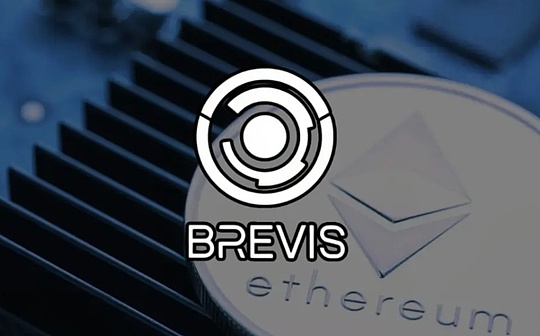
Author: Mauricio Di Bartolomeo, co-founder of Ledn, Blockworks; compiled by Songxue, Bitchain Vision
In 2022, the collapse of both centralized and decentralized crypto lending projects has had a profound impact on the market.Terra alone has caused more than $60 billion in wealth in the DeFi field.Centralized bankruptcy cases, such as FTX, BlockFi, Celsius, Genesis, etc., have lost similar or higher totals.But the sudden collapse of these companies is not just due to a particular market event, but a manifestation of the larger structural problems of the lending industry.
The crisis reveals some of the terrifying reality that the digital asset lending industry is built on instability: lack of industry-wide transparency, lack of internal risk management control, and poor lending standards.
But people still need lending services for bitcoin, stablecoins and digital assets, especially in the developing countries where I was born and raised.
As well-tested established players continue to rebuild the industry, we will also see new faces attracted to “filling” the gaps left by bankruptcy participants.We have seen Coinbase, Kraken and Bitstamp launch their own crypto lending solutions that add legitimacy to the market and highlight the huge scale of this opportunity.
As new players enter the lending space, they must operate with great transparency, caution and caution.If the user’s collateral will be used as collateral and loaned again, transparency and candidity are very important for their earnings generation strategy.Users need to have a clear understanding of how and where their funds are being used.
My view of this lending crisis, like other things in my life, has been deeply affected by the economic collapse I have observed in Venezuela.
The chaos that hyperinflation brings us forces us to find an unexpected way out: Bitcoin.My family and my friends, and millions of Venezuelans, found it necessary — when no dollar is available, and nothing else can be replaced.However, once Venezuelans realize what Bitcoin is and what it can do, they don’t want to sell it.
This is an actual, survival-driven way of using cryptocurrencies.When I saw what Bitcoin did for people in my hometown and what it meant to others, I realized the way we interact with these assets needed to evolve.
Just holding digital assets is not enough for everyone.People need solutions that can use digital assets as collateral or earn interest — to do so, they need to be able to trust a platform.
How do we design our systems to make them as transparent as the cryptocurrencies they process?Last year’s shock shows that we need a new approach to building true trust and stability without losing the innovative core of Bitcoin and digital assets.
The clarity of terms of service and risk exposure is not only valuable, but is not negotiable
Some well-known cryptocurrency lending platforms have begun implementing Proof of Reserves (PoR) protocols, following the pace of some pioneering large global exchanges, an important step in improving transparency and integrity in the industry.Trust and responsibility are very needed, and Proof of Reserves (PoR) is a process that enables a business to demonstrate that it has sufficient assets to cover liabilities (i.e., customer deposits).
With proof of reserve, companies can publicly confirm important aspects of their integrity and financial health.More importantly, this is done through third-party proof and the use of cryptographic proof, sharing the results with stakeholders to build trust.Customers need to ensure that the lending platform truly stands on a solid financial basis.
Using Bitcoin and other cryptocurrencies as collateral is not just a practicality, but a crucial service that can open the door to financial opportunities for millions of people.But the stability of this lending model is not inherent; it depends on the basic concepts of risk management and transparency.
The key concept is that cryptocurrency lending platforms that do not clearly disclose risks and fully reveal their lending and risk management policies (including proof of reserve standards) may endanger the financial security of their customers.
An obvious example is the possible consequences when risk management fails, just like in Celsius.After filing for bankruptcy protection, Celsius proposed a bankruptcy plan to return some crypto deposits to retail clients — most of which are expected to receive about 67% of the recycling through various means — including equity held in the new entity.
This is what happens when you don’t comply with strict risk management protocols.
In an unstable economy, risks are even more significant.For individuals who have leveraged digital asset lending services through the economic storm, the clarity of terms of service and risk exposure is not only valuable, but also uncompromising.They should be given a clear process that allows them to access their digital asset wealth without having to cross minefields of hidden clauses and undisclosed risks.
We are creating a space that everyone can trust
Transparency is crucial.It cannot be an afterthought, but must be part of the platform’s daily business operations.The company must be honest and show users everything, including the risks involved.This complete transparency is crucial for everything, especially when offering a loan for Bitcoin or digital assets.This is to ensure that users’ assets remain safe when market fluctuates.
But transparency is not a once-for-all solution; people need to understand what is happening.This means educating users and giving them information they need to make informed decisions, not just throwing financial terms and numbers to them.
Robust risk management cannot be just a platform approach; it must become a universal standard.Rather than just reacting when things go wrong, we need to focus on preventing before the problem begins.This means paying close attention to funds, stress testing different scenarios, and knowing how to curb bad situations when problems occur.
We are at a critical moment, and creating the path to success requires work that can rebuild trust relationships with users.
By focusing on clear communication, education and robust risk management, we are laying the foundation for not just quick fixes, but for a space that everyone can trust.








